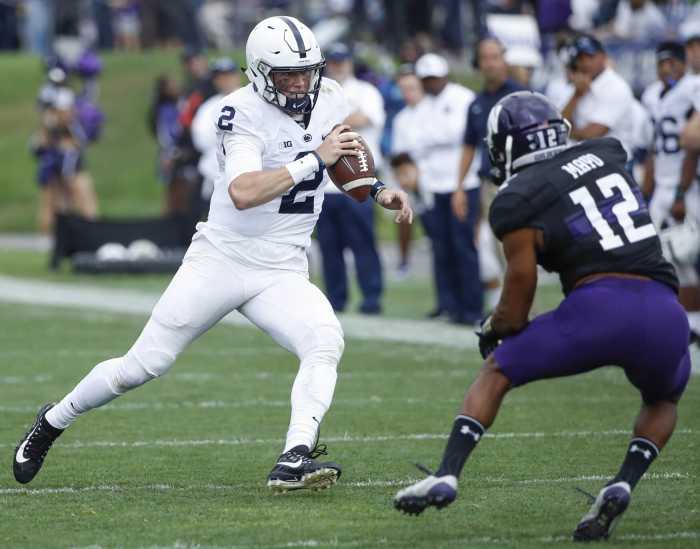When the NCAA announced four years ago that college football would depart from the BCS and move int a four team playoff format, fans around the country rejoiced. The expansion of four teams from two computer elected teams would allow for a greater amount of teams, presumably conference winners that may not have gone undefeated, to still have a shot to compete for the National Championship. But after consecutive years in which a two loss Big Ten Champion was held out of the final four in favor of a non-conference champion, the narrative has seemingly changed.Fans argued that the formula for the selection of the final four teams was flawed and needed to be changed. Some clambered for only conference winners to be included. Others said the four best teams, regardless of their conference place hold, should be chosen to allow for the three most intruiging games to end the year.
Whether the committee has determined that it’s choosing the four best teams or the four most deserving is not the basis of this piece, but instead, I want to focus on the amount of team included in the College Football Playoff landscape, and if things need to be changed in the coming years.
It’s actually funny that this topic came up earlier today, because what sparked it wasn’t a game that included the College Football Playoff at all. The undefeated UCF Knights, coming out of the American Athletic Conference, knocked off the SEC runner-up’s, the Auburn Tigers, 34-27 in the Peach Bowl. With the win, the Knights concluded the season 14-0, knocking off every regular season opponent, Memphis in the AAC title game, and now Auburn during bowl season.
With the undefeated season in hand, the Knights have made the first true claim since the playoff came into existence that the field should be expanded. Western Michigan was everybody’s darling a year ago, but failed to secure the final, and most important, 14th win of the year when the Broncos fell to Wisconsin in the Cotton Bowl. But the win for the Knights brings up the question of expansion, and does the playoff need to go to eight teams to allow for a larger inclusion of teams that either slipped up throughout the regular season, or ones, such as Central Florida, that play outside the realm of the Power Five, and generally have no chance from the start to find themselves within the final four. That assertion has nothing to do with talent on the roster or the team’s ability, as clearly evident by this season, but instead, has everything to do with what said team’s schedule looks like and what conference they play in, along with what team it is. This calamity wouldn’t have been the same had Boise State pulled off an undefeated season. I’d bet it likely would have been different if a military academy, especially Navy, went 13-0, winning the AAC. But because it’s UCF, the tagline changes to one of resume comparability.
That narrative is also one that should be discussed at a later time, but I find myself digressing here in a position in which I don’t want to lose your interest in my true intentions. Back to the expansion debate.
I put up a poll on Twitter today (Shameless plug, you can find me @Tzull34), that asked about the NCAA, and if the CFP should expand to eight teams. While the poll isn’t over yet, the initial results are heavily favoring one outcome: expansion. Of the 35 participants at the time of this piece being written, 91 percent of them said they were in favor of expansion. And people, I get it. I understand your quandary as to why Ohio State didn’t get chosen for the playoff this year, or why Penn State wasn’t in last season, or why UCF couldn’t even get a sniff at the final four despite being the only team in college football this season to win every one of its game. You make a fair and viable point when you make these claims.
But here’s why you’re wrong.
Throughout the existence of college football, the rule of thumb has always been perfection. It was the beauty of the collegiate game compared to the profession counterpart. In order for a team to be considered for an opportunity to play in the national championship, the team likely needed to go undefeated. Even in down years, the most loses that was even remotely acceptable was one. 11-1, and later in the two team championship race a conference title, was the minimum threshold required to compete in the national championship game. And fans complained there wasn’t enough inclusion. There are good teams that are being left out because the SEC champ is almost assuredly going to play for the title.
After years and years of complaint after complaint, college football decided it was going to go with a four team playoff system, a playoff in which the participants would be determined by a nearly unbiased panel. This committee would review strength of schedule, record, and conference titles as baselines to decide which four teams would get in. And the fans were happy. The inclusion of two semi-final games leading up to the National Championship should allow for four conference winners to represent in the final three games to decide one champion. Except, it hasn’t turned out that way, and conference winners are being left out because they lost two games in the regular season and are being passed up on for teams that lost one game in the SEC.
The expansion to four teams made it okay for teams with a loss to still get in. It made it acceptable to have a slip-up and still find your team with a chance to win the whole thing. Fans saw this, complained about the flaws in the selection committee, and now cry for eight teams to be selected for a grouping of quarterfinal games. How can the once storied tradition of grinding out a tough schedule, coming out unscathed and putting a perfect record on the line water down to eight teams in a playoff?
And that’s exactly the phrase of the day: watered down. And the number of the day is 10. And that’s the corniest Sesame Street reference I’ve ever made in an article. It holds some merit, however, as you take a look at the landscape of the country should the committee go to eight teams. You already have teams that have one loss in the playoff. This year is almost somewhat of an anomaly with no two loss teams being chosen. Last year, a two loss team got into the playoff. The committee selecting four teams to compete has already watered down the college world, allowing non-conference winners and teams with one or more loses in the playoff.
Now you want to add an additional four teams?
Where would the consistency be when you add an additional four teams? Is there a consensus pre-determined listing of teams that get in? Do all five Power Five conference winners and the AAC winner automatically qualify for the playoff? How many two loss teams would you feature? Does a three loss team get in? How many, if any, non-AQ conference winners, like FAU would find their way into the mix? There are simply far too many questions for a committee that can barely put together a uniformed, yearly ranking of teams based on whatever criteria they decide to go with in a given year to allow for an additional four teams to get into the playoffs. You want Ohio State, Penn State, USC, TCU, Stanford and the likes to compete for a chance to upset the four that are currently in? I get it, but the consistency would never be there. Would the committee finally find room for the undefeated Knights with eight teams? Do the Lane Kiffin’s Owls deserve a chance to get slaughtered by Clemson in the first game of the playoff because they won ten games for the first time in program history and won Conference USA? Do you get my justification for all of this?
It all comes down to, and back to, watering the system down. The days of having five consistent, dominant teams may be behind us. Outside of Alabama and Clemson recently, the final four has been starkly different in years past. Oregon has represented the playoff, and this past season, the team won seven games. But the song remains relatively the same. You cannot add four more teams because it would further allow for teams to lose games and not face repercussions for it. Three loss teams don’t deserve a shot at the national championship within the confines of college football. I get that the percentage translates to 75 percent and the NFL produces 12 wins Super Bowl champions moreso than any other record since the league went to a 16 game schedule, but the parallel isn’t the same. The gap between the top seeded team in the NFC this season (The Eagles, with a healthy Carson Wentz, let’s assume) and the Seahawks who finished seventh and beat the Eagles, is far smaller than the gap between a team like Miami and the number one team, Clemson.
The expansion of the playoff to include four teams was necessary as the times change. But an additional four teams would be far too many, allowing teams without deserving resumes to get into the playoff. No more participatory acknowledgments than we already have. There are already too many bowl games for undeserving teams because the threshold is too low. Don’t make the mistake of adding more teams to the playoff.
Mandatory Credit: Gary A. Vasquez-USA TODAY Sports





























